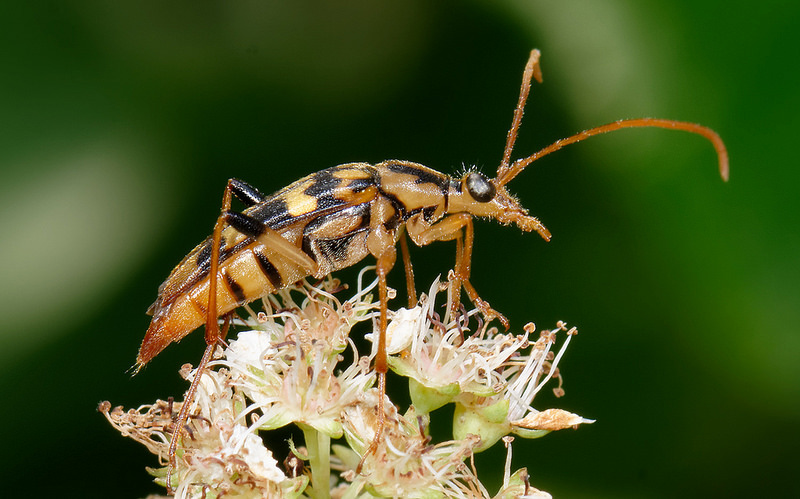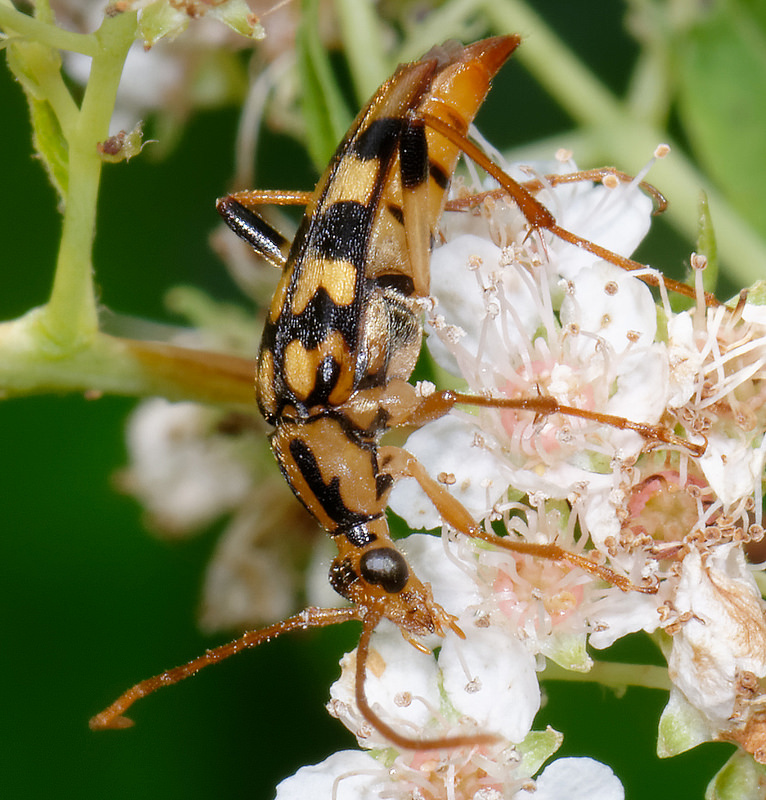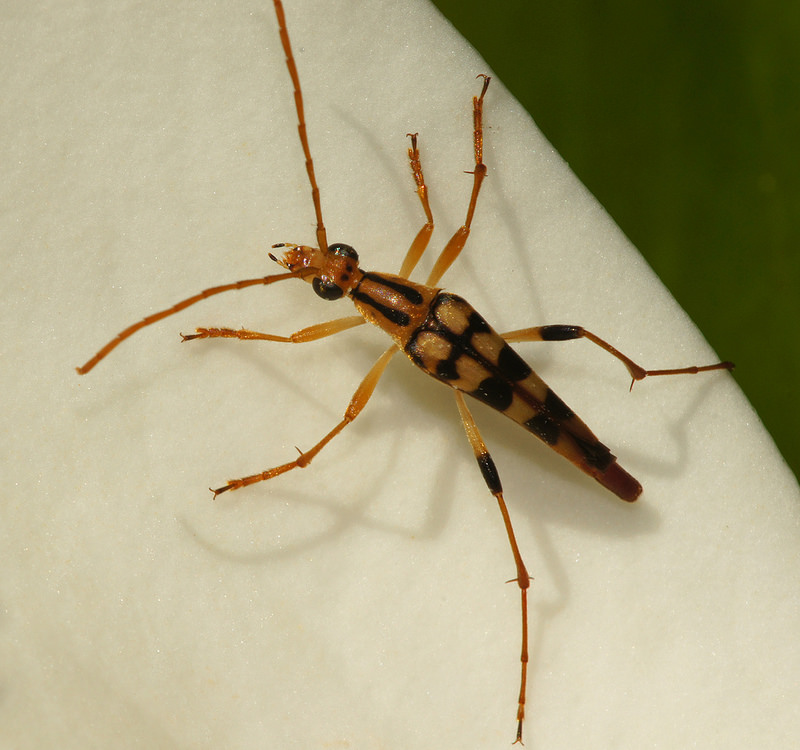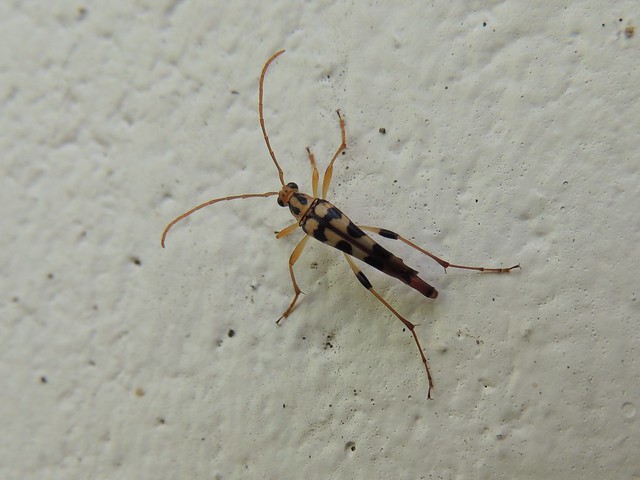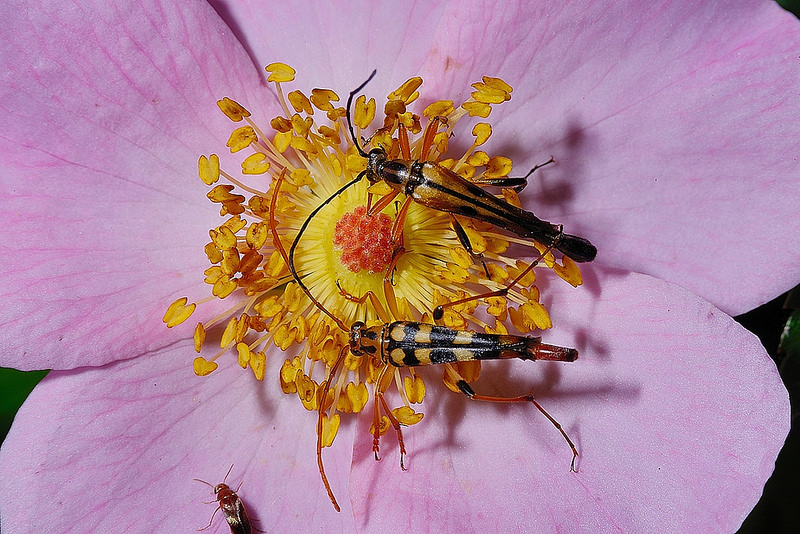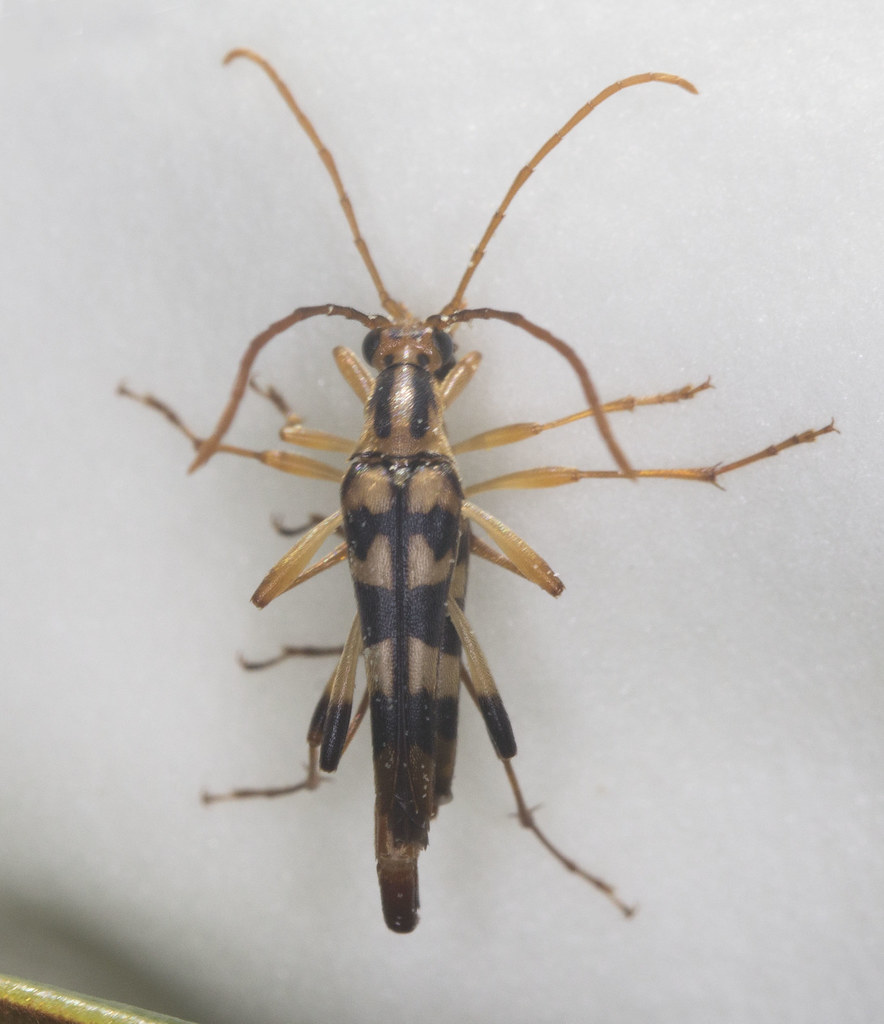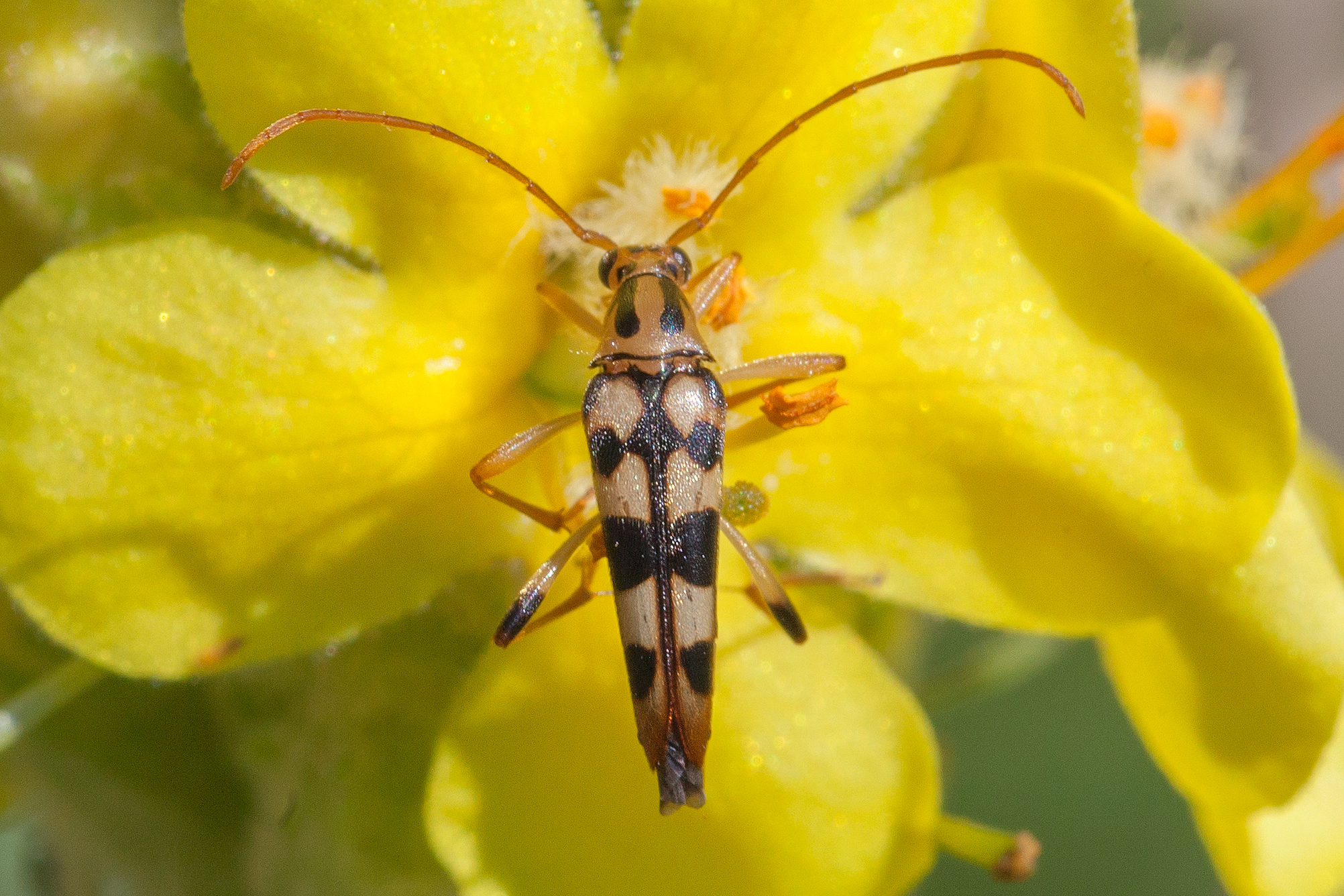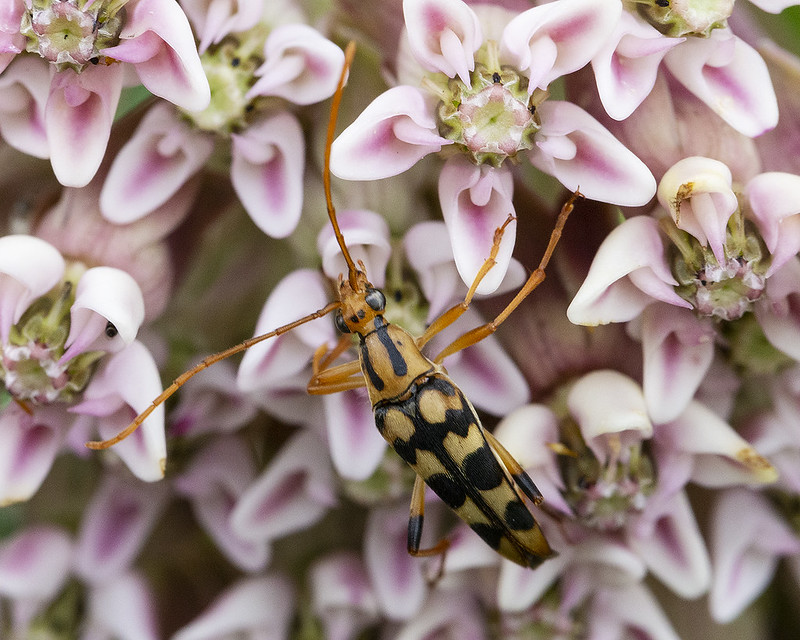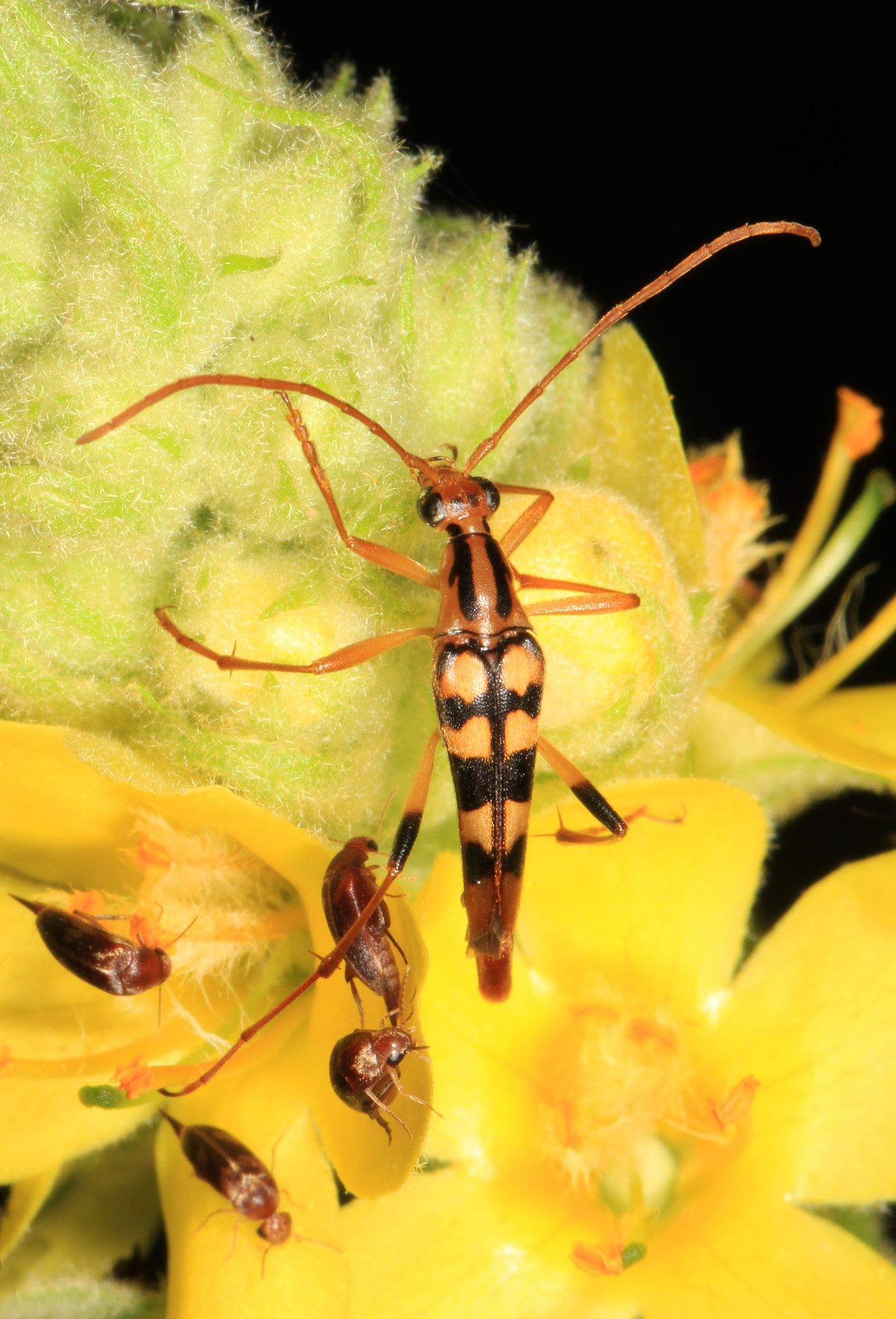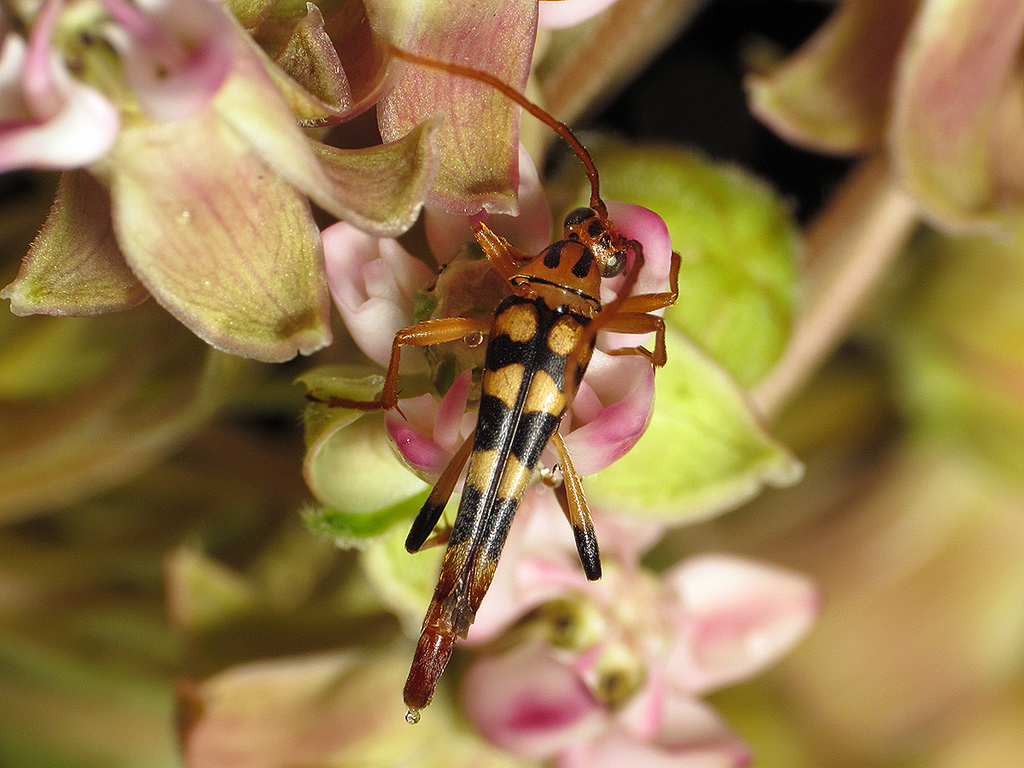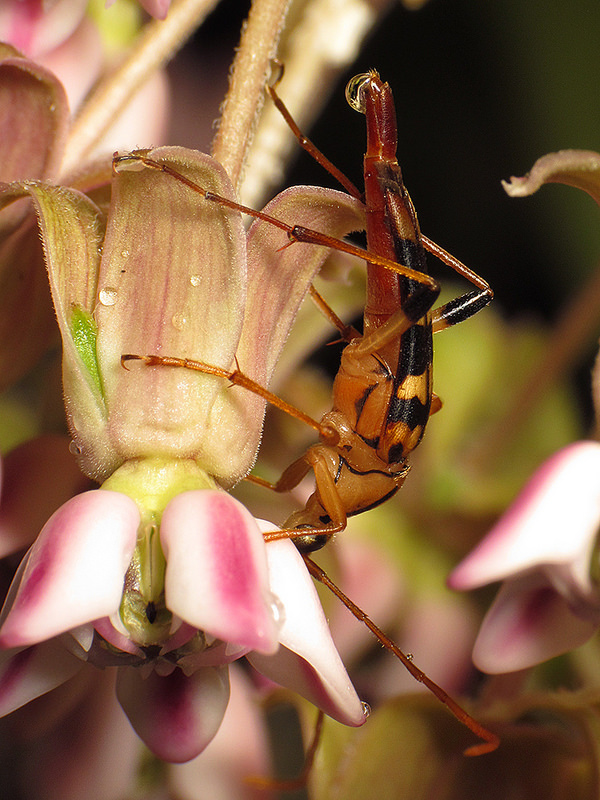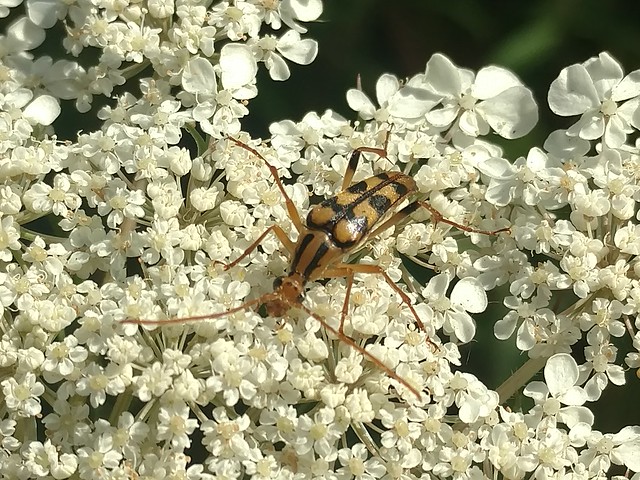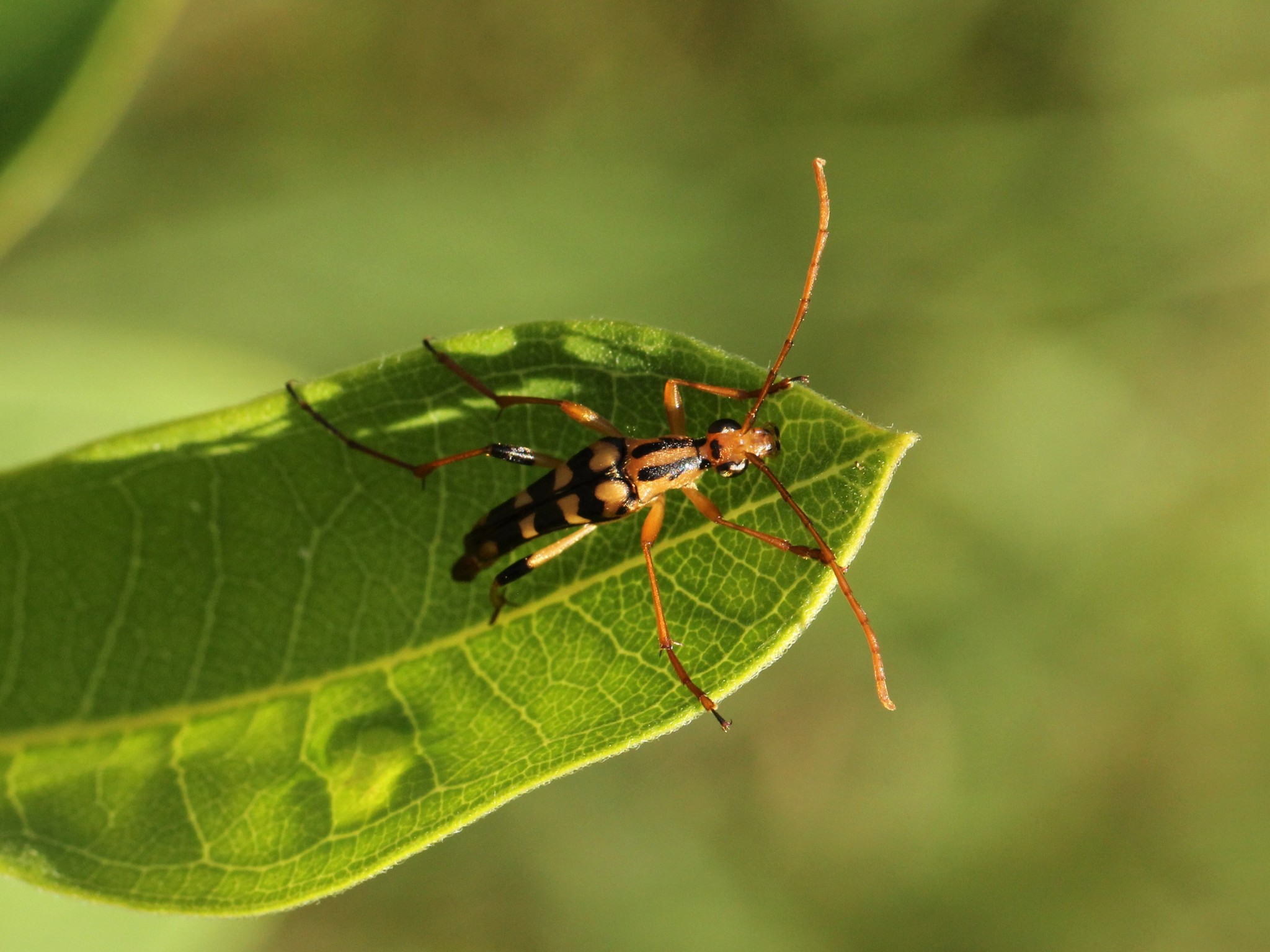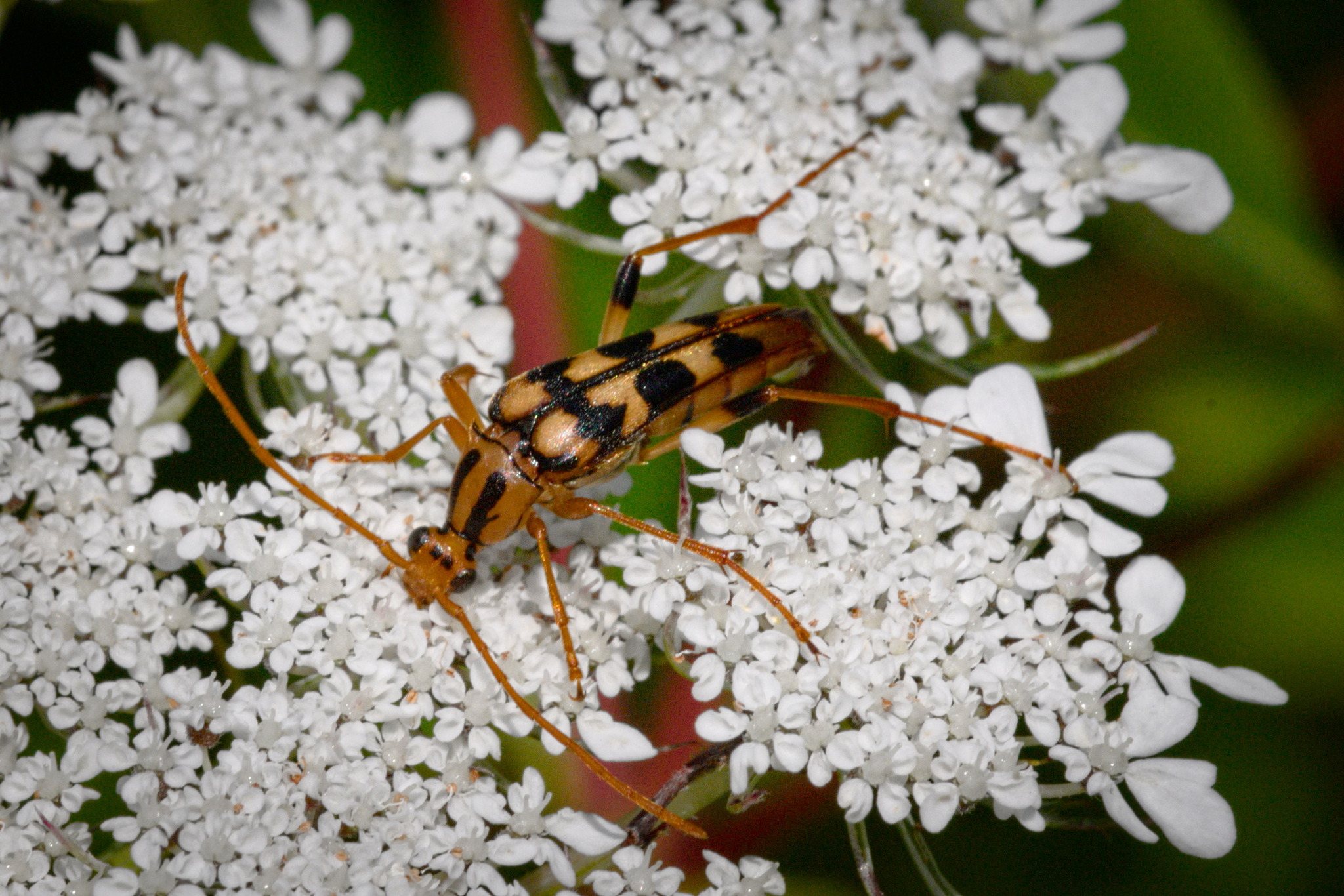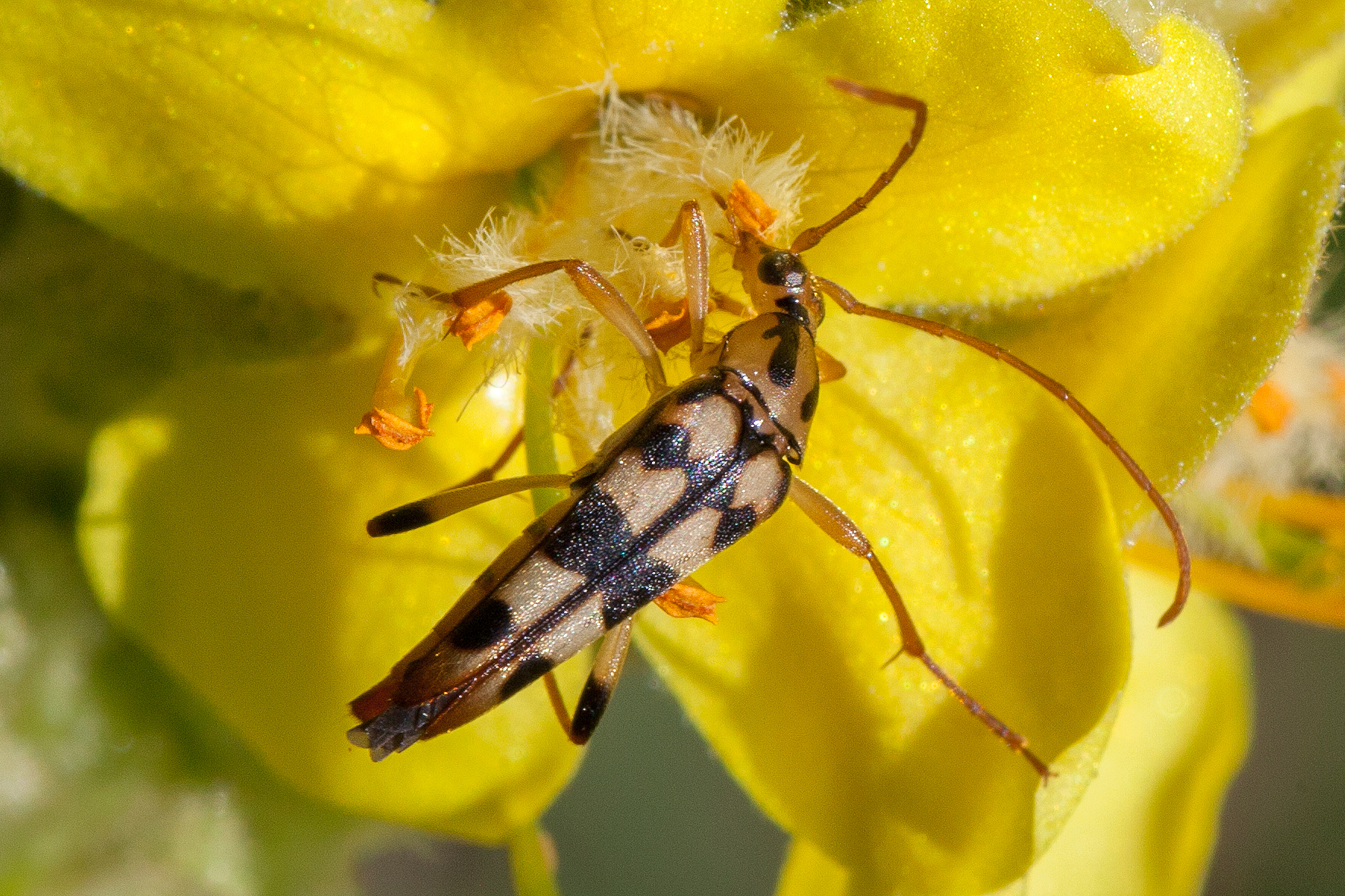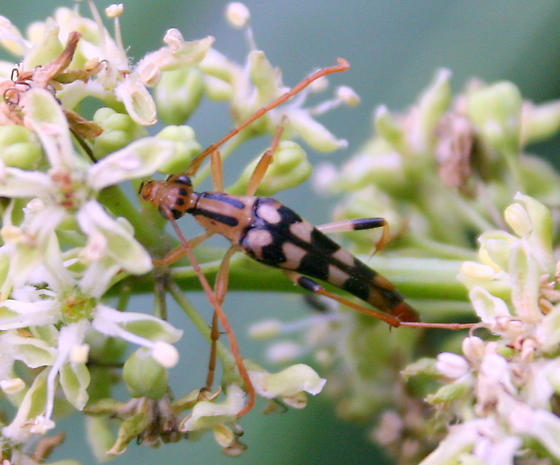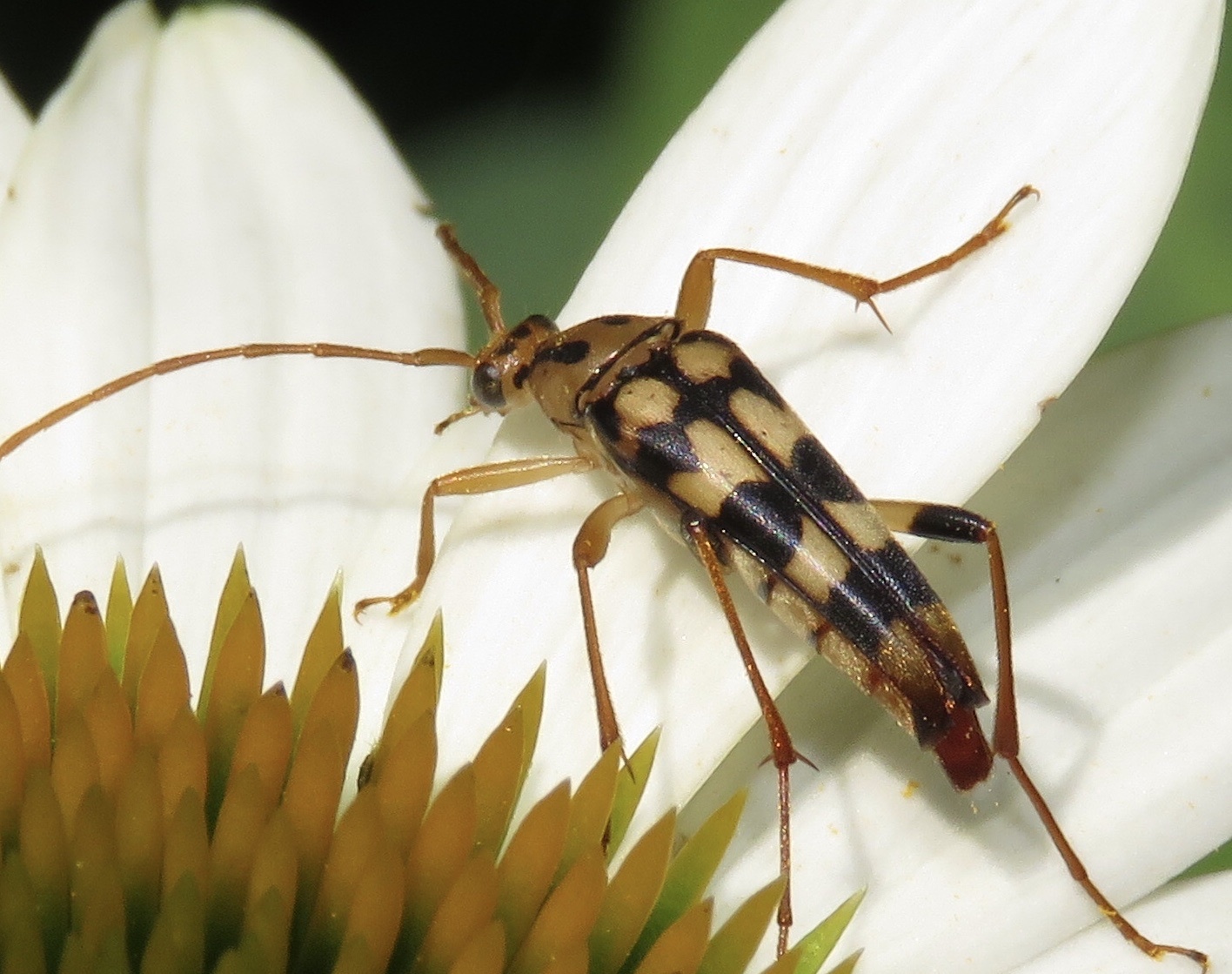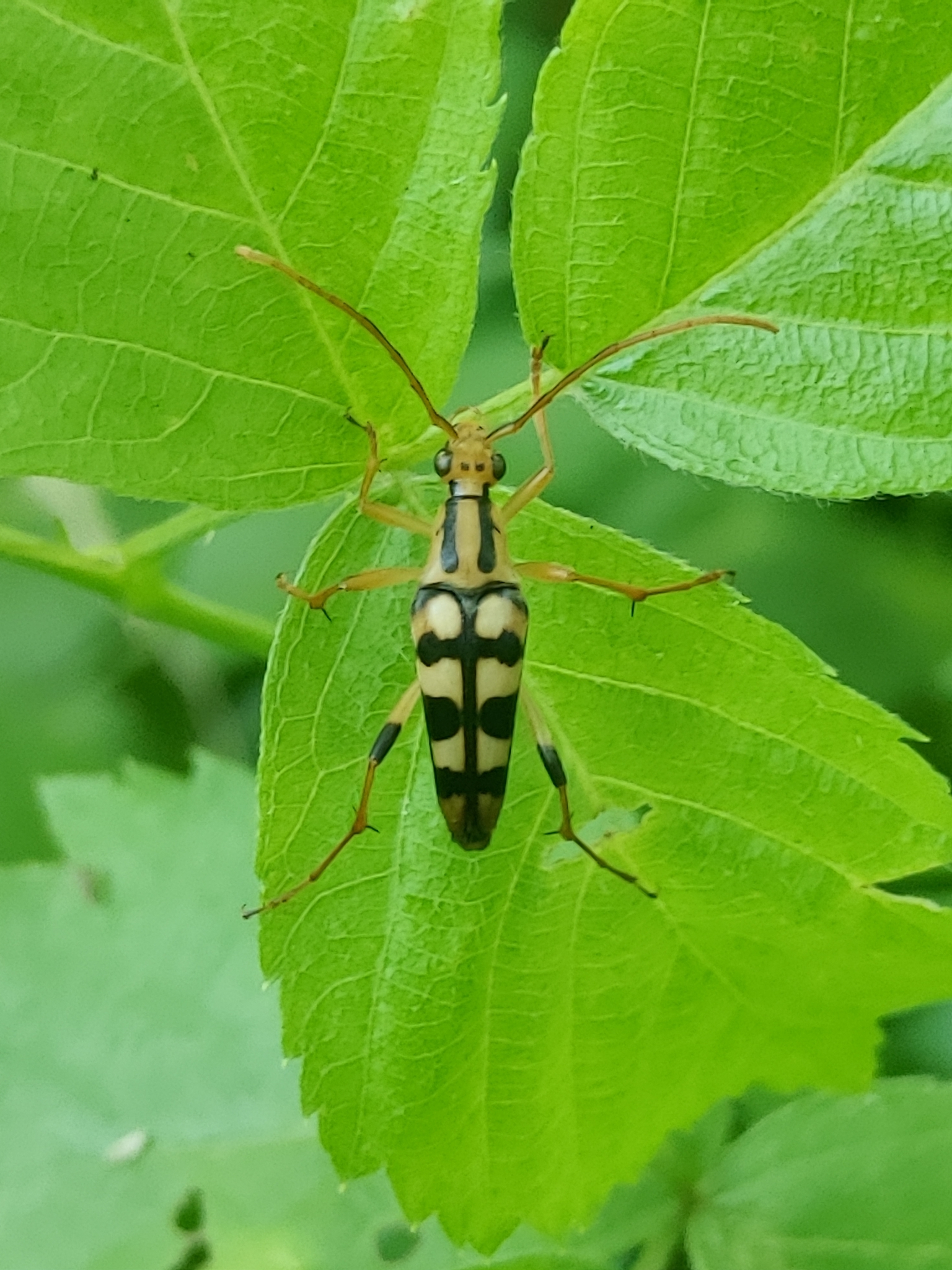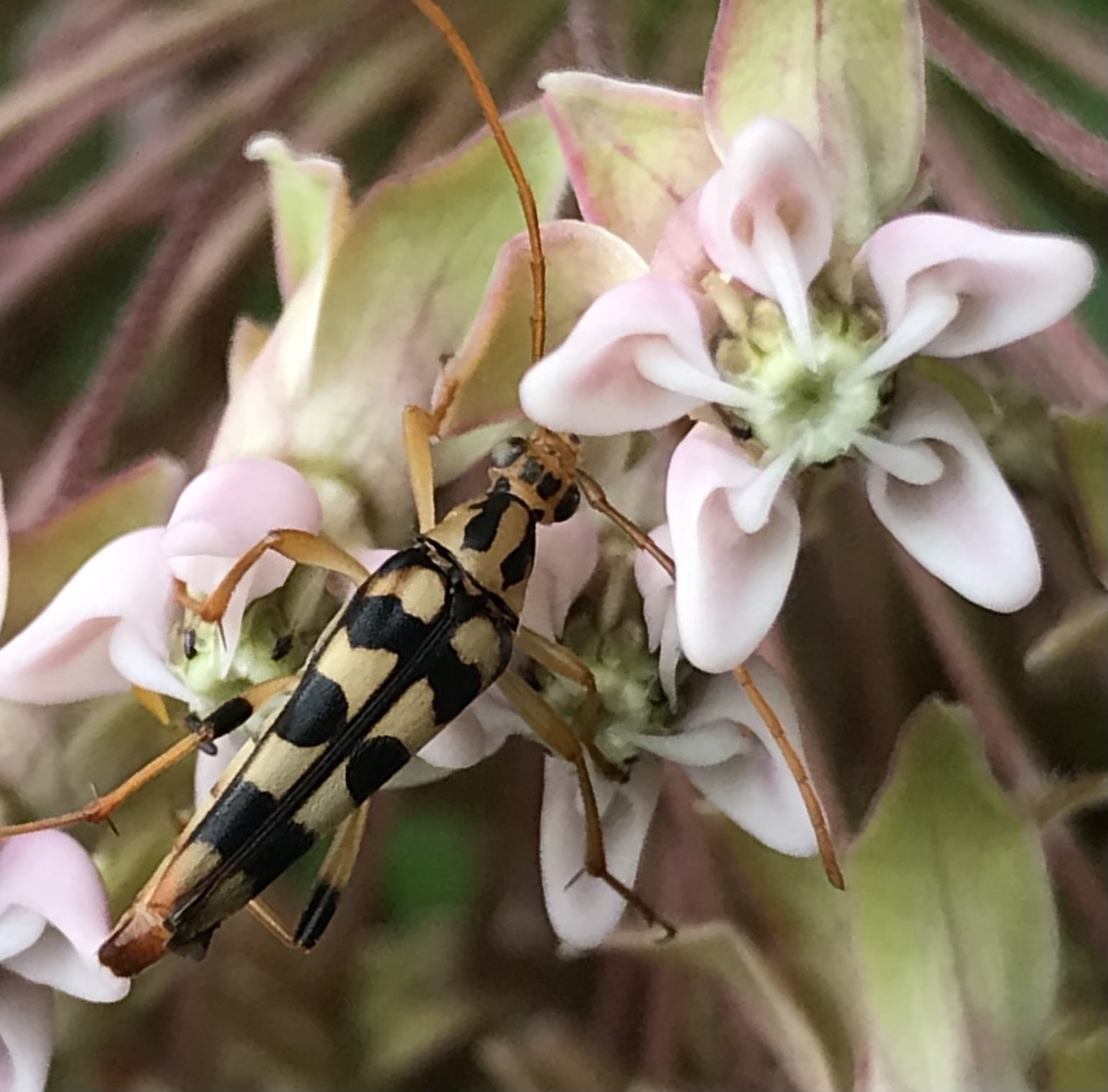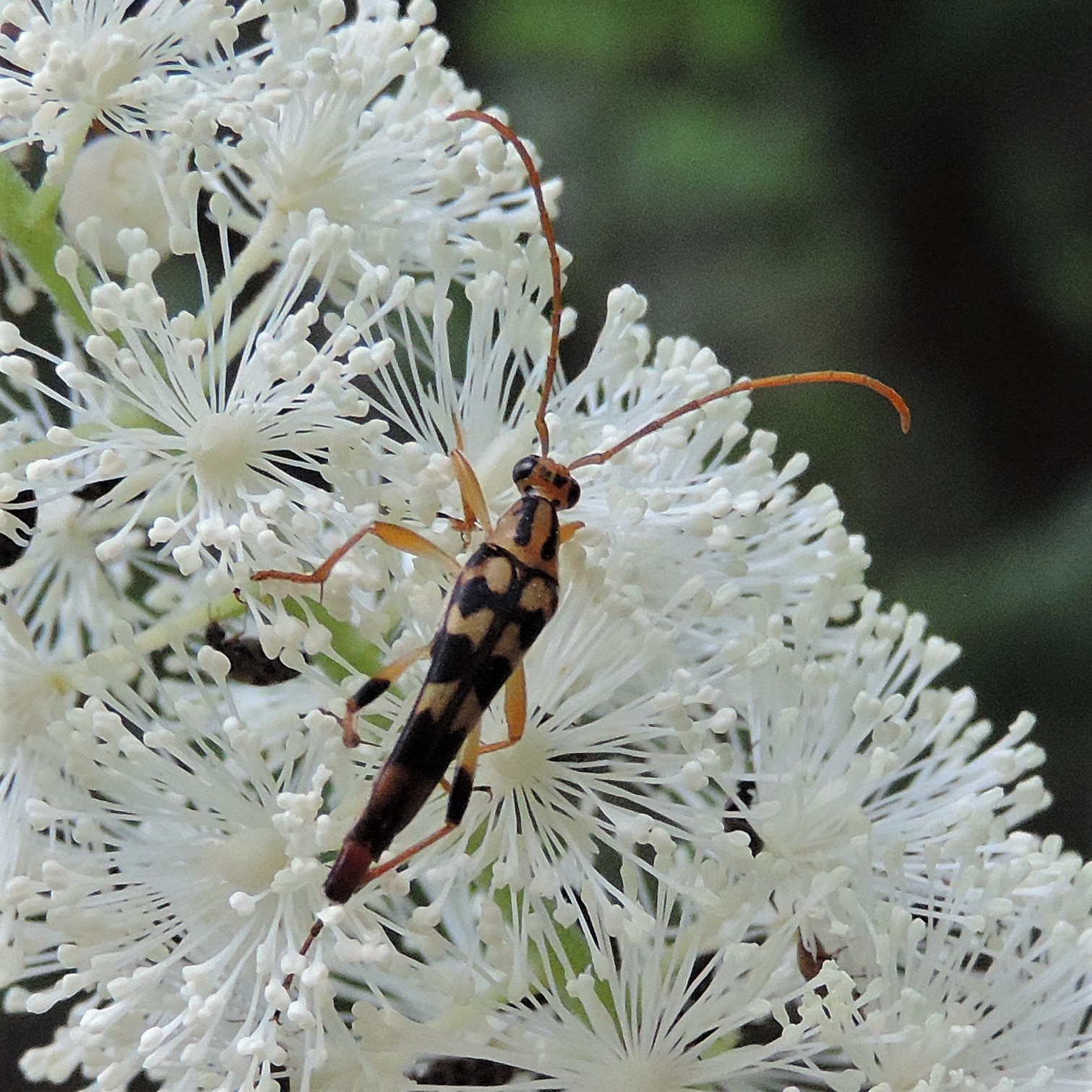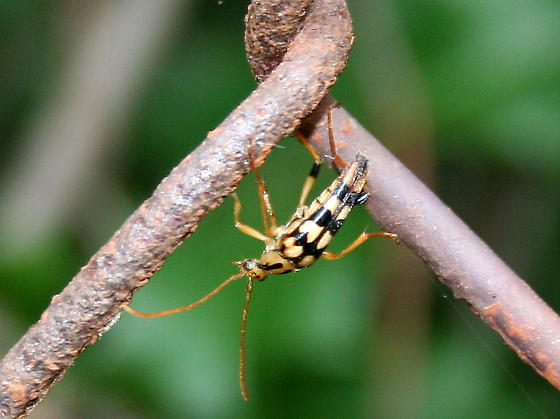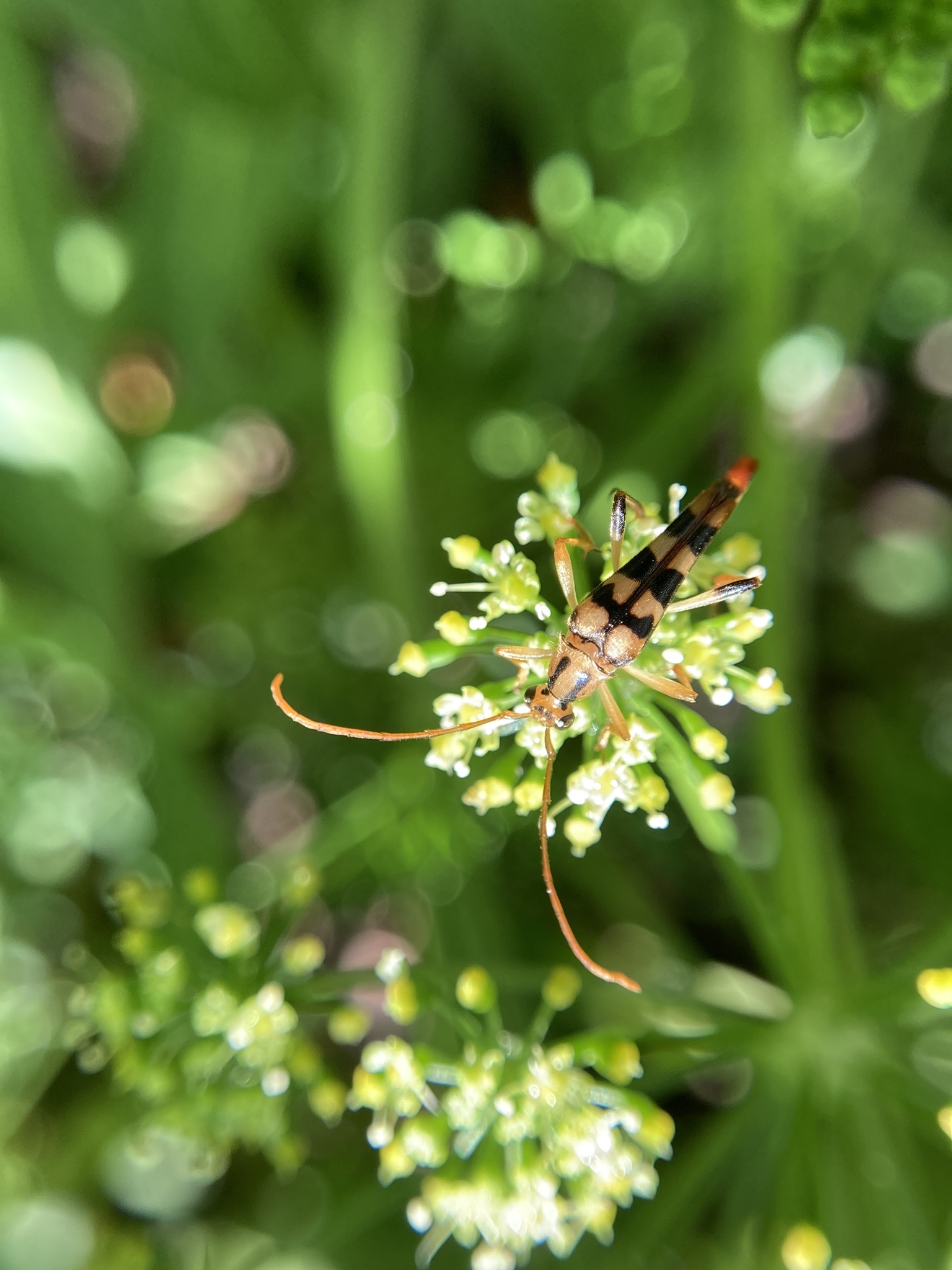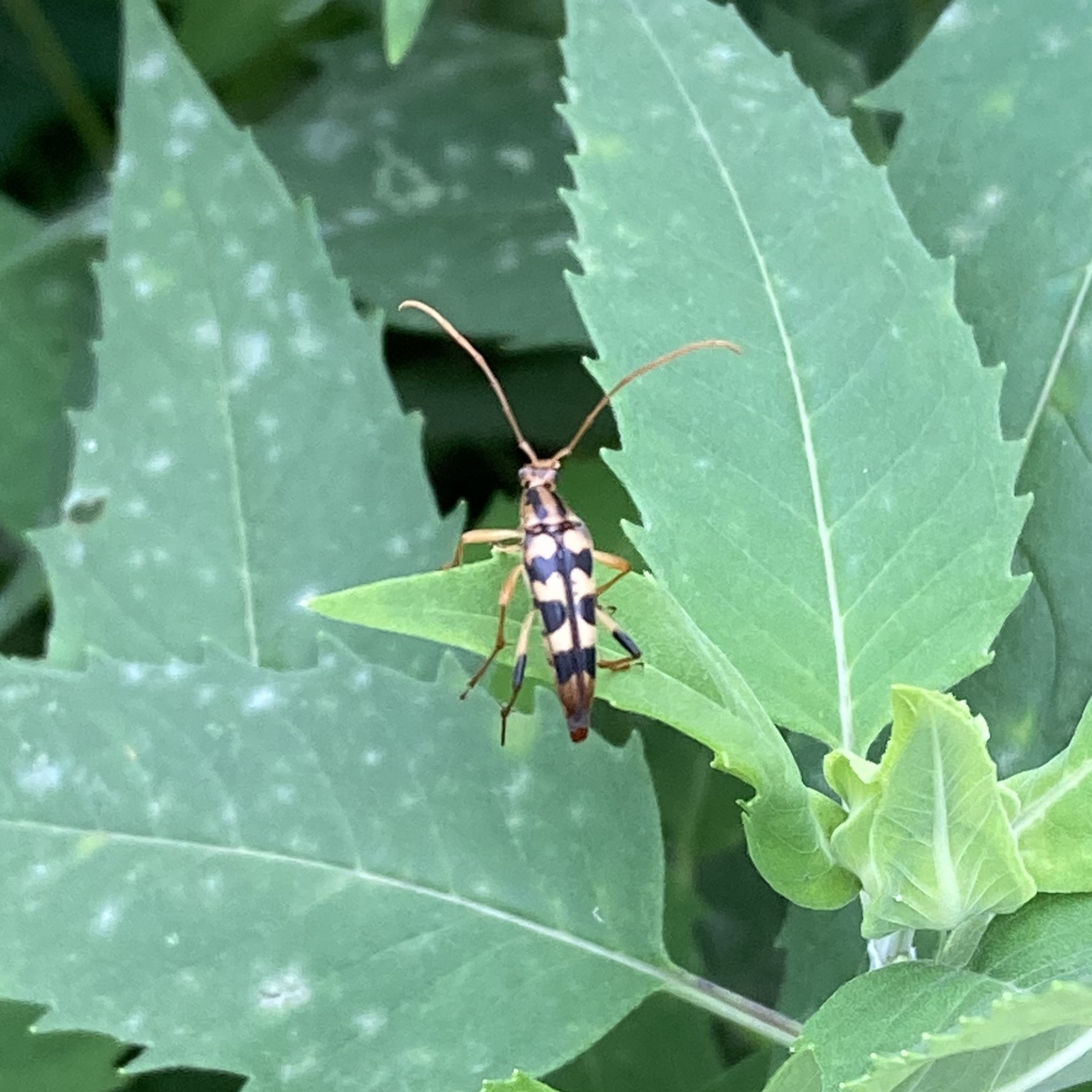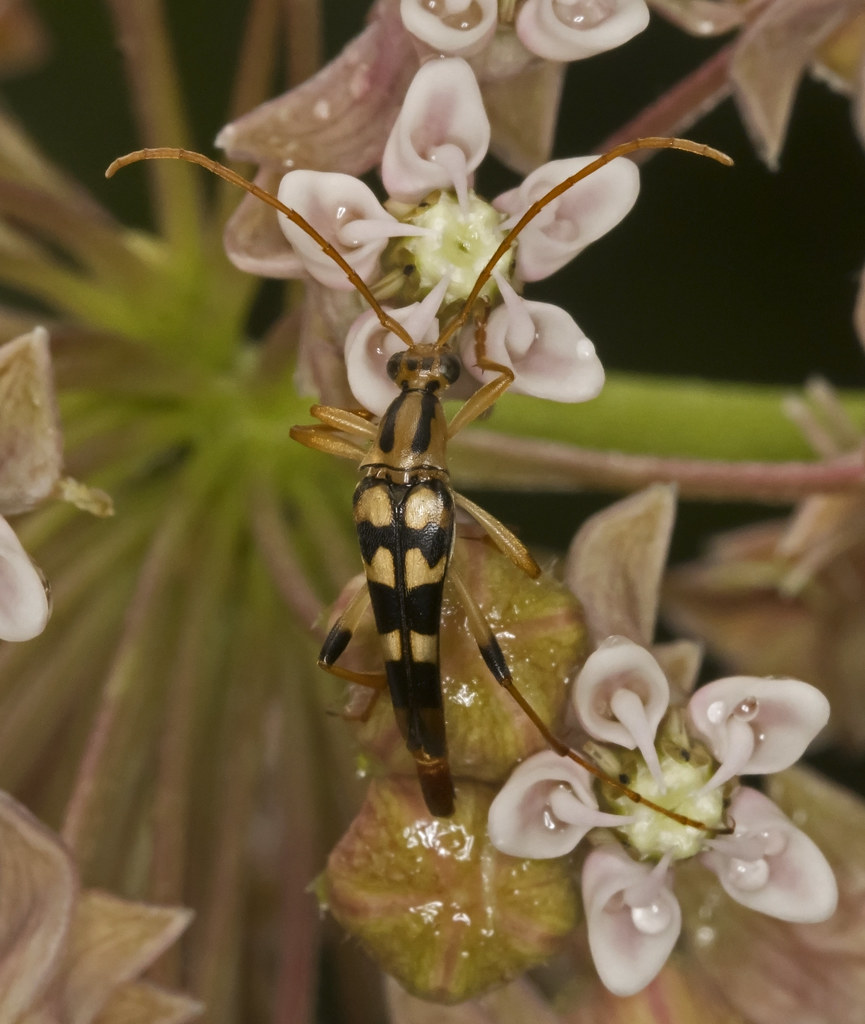Map Snapshot




















98 Records
Description
Note boldly striped pattern. Resembles some members of the genus Typocerus, but distinguished by structural differences such as attenuated abdomen.
Seasonality Snapshot
Use of media featured on Maryland Biodiversity Project is only permitted with express permission of the photographer.
A Strangalia luteicornis in Montgomery Co., Maryland (7/5/2015).
View Record Details
Media by
Steve Scholnick.
Strangalia luteicornis in Montgomery Co., Maryland (7/5/2015).
View Record Details
Media by
Steve Scholnick.
A Strangalia luteicornis in Prince George's Co., Maryland (6/9/2015).
View Record Details
Media by
Barbara Thurlow.
The flower longhorn beetle Strangalia lutecornis in Worcester Co., Maryland (6/21/2013).
Media by
Scott Housten.
Two Strangalia luteicornis in Carroll Co., Maryland (6/14/2015).
View Record Details
Media by
Bob Cammarata.
Strangalia luteicornis in Dorchester Co., Maryland (5/31/2015).
View Record Details
Media by
Jim Brighton.
A Strangalia luteicornis pair in Harford Co., Maryland (7/6/2019). Verified by Bruce Tilden/BugGuide.
View Record Details
Media by
Shannon Schade.
Strangalia luteicornis in Prince George's Co., Maryland (6/23/2020). (c) Sergei Drovetski, all rights reserved.
View Record Details
Media by
Sergei Drovetski.
Strangalia luteicornis in Carroll Co., Maryland (7/10/2022).
View Record Details
Media by
Barbara Speckart.
Strangalia luteicornis in Allegany Co., Maryland (7/9/2017). (c) Judy Gallagher, some rights reserved (CC BY).
View Record Details
Media by
Judy Gallagher.
A Strangalia luteicornis in Allegany Co., Maryland (6/28/2015).
View Record Details
Media by
Ashley Bradford.
A Strangalia luteicornis in Allegany Co., Maryland (6/28/2015).
View Record Details
Media by
Ashley Bradford.
Strangalia luteicornis in Anne Arundel Co., Maryland (6/24/2019). Determined by R.F.C. Naczi, New York Botanical Garden.
View Record Details
Media by
Wayne Longbottom.
Strangalia luteicornis in Allegany Co., Maryland (7/10/2021). (c) jrcagle, some rights reserved (CC BY).
View Record Details
Media by
jrcagle via iNaturalist.
A Strangalia luteicornis in Baltimore Co., Maryland (6/18/2006).
View Record Details
Media by
Sue Muller.
Strangalia luteicornis in Montgomery Co., Maryland (7/2/2012). (c) Mike Ostrowski, some rights reserved (CC BY-NC-SA).
View Record Details
Media by
Mike Ostrowski.
Strangalia luteicornis in Prince George's Co., Maryland (6/23/2020). (c) Sergei Drovetski, all rights reserved.
View Record Details
Media by
Sergei Drovetski.
A male Strangalia luteicornis in Baltimore City, Maryland (6/18/2008). Determined by Ross Hill/BugGuide.
View Record Details
Media by
Thomas Wilson.
Strangalia luteicornis in Montgomery Co., Maryland (6/26/2020). (c) David Kidwell, some rights reserved (CC BY-NC-SA).
View Record Details
Media by
Dave Kidwell.
Strangalia luteicornis in Montgomery Co., Maryland (6/20/2013). (c) Even Dankowicz, some rights reserved (CC BY).
View Record Details
Media by
Even Dankowicz via iNaturalist.
Strangalia luteicornis in Howard Co., Maryland (6/17/2021). (c) johncanoles, some rights reserved (CC BY-NC).
View Record Details
Media by
johncanoles via iNaturalist.
Strangalia luteicornis in Howard Co., Maryland (6/13/2021). (c) akorman60, some rights reserved (CC BY-NC).
View Record Details
Media by
akorman60 via iNaturalist.
Strangalia luteicornis in Frederick Co., Maryland (7/5/2020). (c) Emilio Concari, some rights reserved (CC BY-NC).
View Record Details
Media by
Emilio Concari.
A Strangalia luteicornis in Baltimore City, Maryland (6/13/2007). Determined by Ted C. MacRae/BugGuide.
View Record Details
Media by
Thomas Wilson.
Strangalia luteicornis in Prince George's Co., Maryland (6/26/2020). (c) Hans Holbrook, some rights reserved (CC BY-NC).
View Record Details
Media by
Hans Holbrook.
Strangalia luteicornis in Frederick Co., Maryland (7/1/2022). (c) Katie Woods, some rights reserved (CC BY-NC).
View Record Details
Media by
Katie Woods via iNaturalist.
Strangalia luteicornis in Baltimore Co., Maryland (7/2/2021).
View Record Details
Media by
Richard Crook.
Source: Wikipedia
| Strangalia luteicornis | |
|---|---|

| |
| Scientific classification | |
| Domain: | Eukaryota |
| Kingdom: | Animalia |
| Phylum: | Arthropoda |
| Class: | Insecta |
| Order: | Coleoptera |
| Suborder: | Polyphaga |
| Infraorder: | Cucujiformia |
| Family: | Cerambycidae |
| Genus: | Strangalia |
| Species: | S. luteicornis
|
| Binomial name | |
| Strangalia luteicornis (Fabricius, 1775)
| |
| Synonyms[1] | |
| |
Strangalia luteicornis is a species of flower longhorn in the family of beetles known as Cerambycidae.[1][2][3][4] It is found in North America.[1] It has been observed mating on Hydrangea arborescens[5] and Saururus cernuus, with the female consuming pollen from the latter plant. [6]


References
[edit]- ^ a b c "Strangalia luteicornis Report". Integrated Taxonomic Information System. Retrieved 2018-05-04.
- ^ "Strangalia luteicornis species details". Catalogue of Life. Retrieved 2018-05-04.
- ^ "Strangalia luteicornis". GBIF. Retrieved 2018-05-04.
- ^ "Strangalia luteicornis Species Information". BugGuide.net. Retrieved 2018-05-04.
- ^ McDowell, William T. (2011). "Diversity and Notes on the Reproductive Biology of Cerambycidae (Coleoptera) on Hydrangea arborescens L. and Daucus carota L. at LaRue-Pine Hills Research Natural Area in Southern Illinois, U.S.A." The Coleopterists Bulletin. 65 (4): 411–416. doi:10.1649/072.065.0418. ISSN 0010-065X. JSTOR 41413652. S2CID 86492339. Retrieved 23 June 2022.
- ^ Steury, Brent W. (2019). "Beetles (Coleoptera) Associated with Flowers of Lizard's Tail, Saururus cernuus L. (Saururaceae), in Calvert County, Maryland". The Maryland Entomologist. 7 (3): 11.
Further reading
[edit]- Bezark, L. G.; Monné, M. A. (2016). Checklist of the Oxypeltidae, Vesperidae, Disteniidae and Cerambycidae (Coleoptera) of the Western Hemisphere (PDF) (Report).
- Lobl, I.; Smetana, A., eds. (2013). Catalogue of Palaearctic Coleoptera, Volume 6: Chrysomeloidea. Apollo Books. ISBN 978-90-04-26091-7.
External links
[edit] Media related to Strangalia luteicornis at Wikimedia Commons
Media related to Strangalia luteicornis at Wikimedia Commons
